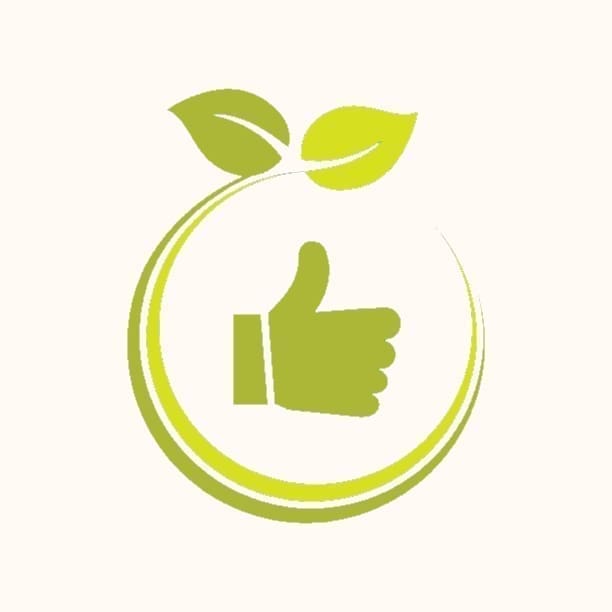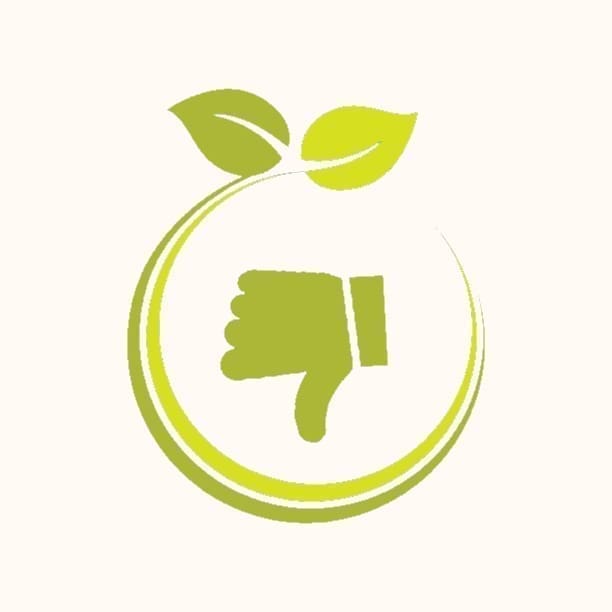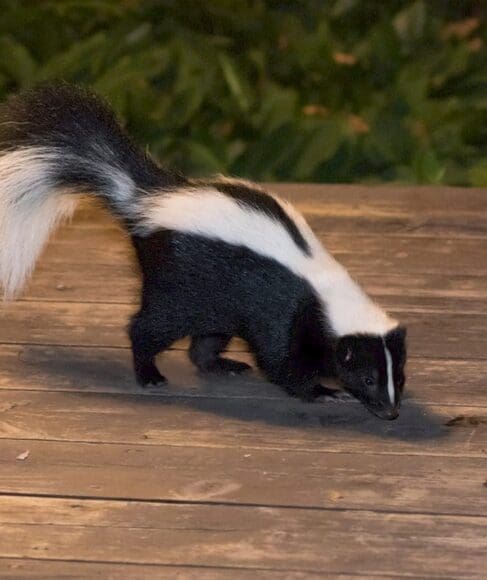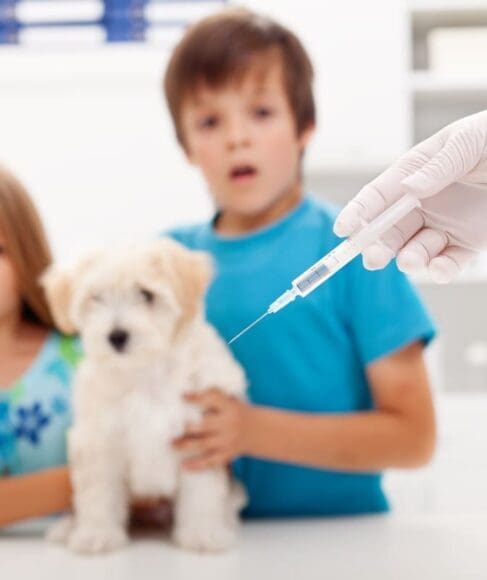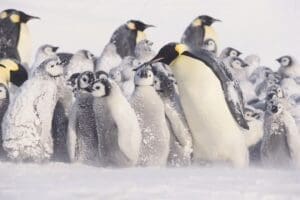If you consider having a new member in your family by this time, it is important that you know that having a pet at home involves responsibilities and the care they deserve.
Read this guide so that both you and your puppy lead a full and healthy life, after all they need Equilibrium too.
Recommended House and Accommodation:
First assign your dog a place. It can be inside or outside the house, just make sure that it can be protected from the sun, rain and cold. If you are going to live indoors, choose a special space to place your bed. Your dog must have its own space. Always keep the place where your dog lives clean, as well as dry and ventilated, so that it does not retain moisture, heat or bad smells. It's the best for you and your dog - never use common household disinfectants like bleach, floor cleaners, glass cleaners, etc. You can use detergent, but you must rinse the house very well so as not to leave residues, because they cause alterations in the skin of the animals, which can be serious. Also, do not use insecticides, unless your dog is not in contact with these products. In any case, after application, thoroughly ventilate the area at least four or five hours before your pet is in the place. Insecticides cause severe poisoning and even death. Never leave poisons or products to exterminate harmful fauna, such as poisons for rats, cockroaches, scorpions, etc., within reach of your dog, because these products can kill him in a few hours if they are not treated immediately by the veterinarian.
Recommendations of accessories and utensils:
The ideal accessories to feed and give water to your pet are made of aluminum because this material does not rust and is easy to clean. Also, your dog will not be able to nibble them.
Plastic accessories are also acceptable, as long as your dog doesn't destroy them. It is important that you choose the size of the utensils in proportion to the animal and that you consider the number of animals: each of them must have their own plate, to avoid lawsuits or that one of them is left without eating.
Recommended toys:
Meat bones are ideal, because in addition to serving as toys, they are effective in cleaning and strengthening teeth. They are especially useful when puppies destroy things in the home. You should buy at least one for your dog. The balls should be proportional to the size of your dog. They should never be small because your pet can swallow them and cause various disorders or even death from obstruction. Neither should they be made of sponge or flexible plastic - inflatable balls - because when biting them it is easy for your dog to swallow fragments of the material, and over time have severe intestinal disorders. Rag dolls are recommended.
In the bathroom he recommends:
Brushed. If your dog has long hair, brush it daily with a special brush - a dog brush - and if it is short-haired, brush it at least 3 times a week to maintain its silkiness and shine.
Nails. If your dog lives indoors, it is necessary to have his nails checked, because in these conditions the nails will not wear out naturally and grow excessively. This will cause discomfort when walking, pain, and may even bury you and cause abscesses. Better cut them every two or three months with the help of the veterinarian, as the case may be.
Ears They are a fundamental part of your dog's anatomy. Along with smell, dogs think with this sense; maybe they use it more than sight. Therefore, you should clean your dog's ears carefully and carefully at least once a month. The procedure is relatively simple. You can use hydrogen peroxide or a little vinegar diluted with the same portion of water. Clean the ear from the inside - the one that is in contact with the body - with a cotton swab soaked in any of the aforementioned substances, as many times as necessary until they are thoroughly clean. Subsequently, with one hand he raises his ear and with the other he moistens a clean cotton ball; squeeze it into my ear as much as possible. Immediately press lightly on the lower part of the ear - not the ear - and massage it lightly for a few seconds. Let your dog shake his head to expel excess fluid from the ear. Finally, with a dry cotton swab, clean the inside of the ear and the ear canal. Repeat the same procedure to clean the other ear. Of course, to get it right, you will need some practice.
Anal sacs. We commonly forget anal sacs or we just don't know they exist, but they play an important role. If you do not clean them constantly, your dog will defecate with difficulty or suffer from severe constipation and pain. These sacs are found in the inner and final part of the rectum, next to the anus. You can not see them but you can feel them. To clean them, lift your dog's tail. Next to the anus you will feel small bumps - these are the anal sacs. The procedure is easy. Stand to one side of the animal; Lift your tail up with one hand, and with the other, gently slide your thumb and index finger on both sides of the anus so that the area is not injured. A smelly liquid will come out under pressure: it is excrement trapped in the sacks that cannot come out without slight pressure. If nothing comes out, don't worry: it could be a good sign, since your dog was able to do it without your help, with the famous stroller. If nothing comes out but you feel bulging in the sacks, see your vet. If you have a small breed dog, you will surely have to clean the anal sacs. If, on the other hand, you own a large or medium one, you may not have to do it, but do not trust yourself.
Teeth. They are an important part, because with them your dog grinds the food he eats. Wash them with products and special brushes for dogs; never with your pasta, it is very aggressive for them, it stings and burns them. If you prefer, provide meat bones for him to clean himself and free you from the round.
Eyes. The eyes are life. Small breed animals such as Pug They tend to suffer from ailments in the eyes, they are generally irritated and tear a lot. Because they are close to the ground and the dust infects them. We recommend washing the eyes and the area where the tears run –pigmented hairs– at least three or four times a week with warm and fresh chamomile water. If your pet has other signs, such as closed eyes, swollen eyelids, pain when touched, itching, inflammation of the third eyelid for more than five days, or opacity of the eye, take him to the veterinarian for an appropriate examination. Don't let more than eight days go by without your dog being examined by a vet. Negligence can be serious.
How often should you bathe your dog? You should bathe it every three or four weeks, to avoid excess moisture on the skin and, as a consequence, its dryness. What should you bathe it with? Use warm water and mild soap, in order to avoid skin diseases, such as dryness, dandruff, hives, etc. Never use shampoo, conditioners, or detergents, because they dry out the skin, cause dandruff, or problems that could become serious.
Instructions for going for a walk once the vaccination schedule is finished.
Get used to always going out with a collar and leash. This way you can have control over him and avoid being hit by a car, assaulting someone, fighting with another animal or getting lost. Always put his identification plate on him. If it gets lost, the plaque greatly increases your chances of finding it. Always carry a bag with you to lift the excrement from the public road. Make sure that he does not eat waste, excrement of other animals, dirt, etc., because he can get sick. If you are going to leave by car, do not give him anything to eat, at least two hours before departure. It's about not vomiting or defecating in your car. You can give him to drink water only before and after the walk. Anyway, make sure he urinates before getting in the car. If possible, keep it in a carrier cage; it is the best for your puppy.
The traveling dog manual
Get used to always going out with a collar and leash. In this way you can have control over him and avoid being hit by a car, assaulting someone, fighting with another animal or getting lost. Always put your nameplate on it. If it gets lost, the plaque greatly increases your chances of finding it. Always carry a bag with you to lift excrement from the public thoroughfare. Make sure that he does not eat waste, excrement from other animals, dirt, etc., as he can get sick. If you are going to leave by car, do not give him anything to eat, at least two hours before departure. It's about not vomiting or defecating in your car. You can give him to drink water only before and after the walk. Anyway, make sure he urinates before getting in the car. If possible, keep it in a carrier cage; It is the best.
CARE MANUAL for puppies.
Dogs are curious animals by nature and they often get into trouble because of their curiosity. Since they do not have hands to explore things, and due to their scavenger-predatory nature, they use their mouths to investigate everything that comes within reach. This can cause us many problems when they find something harmful to their health. To help you prevent accidents for your puppy, we present a list of 20 common things in any home that can have dire consequences for your dog.
- Chocolate Although chocolate is a delicacy for us humans, and probably also for our canine friends, it is not a good idea to give your dog chocolate. The chocolate It contains a substance that is toxic to dogs, called theobromine. Theobromine is an alkaloid obtained from the cocoa plant that stimulates the central nervous system, causes bronchodilation, and has various cardiovascular effects. Dogs cannot eliminate theobromine easily and therefore it becomes a toxic agent for them. It is estimated that as little as six grams for every kilo of the dog's weight can be lethal. Of greater concern is dark chocolate, because it contains 10 times more theobromine than milk chocolate. Signs of canine chocolate poisoning include: increased general activity, diarrhea, vomiting, urinary incontinence, increased heart rate, increased breathing rate, tremors, and spasms. So, no chocolate for your dog!
- Paracetamol Who has not ever taken a paracetamol? That painkiller that takes away the headaches and other ills of modern life. However, this medicine is a poison for our dogs. Paracetamol poisoning in dogs occurs because the pain reliever damages the liver and red blood cells. As a result, a dog poisoned by acetaminophen can die from liver necrosis. It is estimated that 150 milligrams of paracetamol for every kilo of the dog is the lethal dose. This means that two paracetamol tablets can kill your dog. So, no paracetamol for your dog!… Even if his head hurts. Check the expiration date of your medications, as they, like you, can cause Side effects.
- Alkalis Common household alkalis are bleach, potassium permanganate, and ammonium hydroxide. These substances are found in plumbing fluids, bathroom detergents, ammonia, and dish detergents. They are also present in alkaline batteries, including watch batteries (button type). If a dog ingests any of these things, he will have irritations and burns in the mucous membranes of the digestive tract: mouth, esophagus, stomach, intestine and colon. These damages are usually fatal. Symptoms of alkali poisoning are: irritation of the oral mucosa, chest pain, seizures, drooling, poor appetite and lethargy. Death usually occurs within 24 hours of ingestion. Be very careful and do not leave these things within reach of your dog.
- Mothballs Mothballs are extremely dangerous when swallowed. Obviously, the same danger exists if your dog eats one of these pellets. Mothball poisoning damages the liver in dogs and affects the central nervous system. Its symptoms include vomiting and seizures. Be very careful where you put these balls and, if possible, do not use them.
- Detergents and fabric softeners Although detergents can be toxic if your dog ingests them, fabric softeners are extremely toxic and can be fatal. Fabric softeners contain cationic detergents, which are also found in disinfectants and germicides. Symptoms of poisoning with these substances include: hypersalivation (drooling), lethargy, vomiting, burns in the mouth, seizures, shock and coma.
- Mouthwash Some mouthwashes contain boric acid, which is highly toxic to dogs. Other common household items that contain boric acid are contact lens cleaning solutions and denture cleaning solutions. The symptoms that a dog poisoned with boric acid can present are: vomiting, drooling, seizures and coma.
- Antifreeze Antifreeze is among the greatest risks to pets. Every year many dogs die from antifreeze poisoning. The reason many dogs die from antifreeze is because these substances have a pleasant smell and taste for dogs. So, it's not uncommon for dogs to decide to try something that smells so good. The toxic component of antifreeze is ethylene glycol, which affects kidney function and causes symptoms such as: seizures, vomiting, and lethargy.
- Clothes whiteners Clothing bleaches such as chlorine and its compounds are very toxic to dogs. The symptoms they produce are: vomiting, drooling and abdominal pain. Never leave these substances within reach of your dog.
- Pepas or fruit seeds Many pips, or fruit seeds, are toxic to dogs. Some seeds are so large that they can obstruct the respiratory tract, but others are simply toxic. Two of the most toxic seeds for dogs are peach and apricot. Dogs, although they are more omnivores than carnivores, did not evolve to feed on seeds. Therefore, your digestive system cannot process these elements correctly. The result can be disastrous, so avoid allowing your dog to eat fruit seeds.
- Ornamental plants Like fruit seeds, many ornamental plants are toxic to dogs and other animals. Although dogs often eat grass, apparently to improve their digestion when they lack fiber in their diet, they are not able to tolerate all vegetables. The symptoms caused by plant poisoning may vary depending on the species ingested, but in general they include vomiting and effects on the central nervous system. Some plants toxic to dogs are: tomato, spinach, azalea, autumn crocus, avocado (leaves), oleander, actea, nightshade, nightshade, foxglove, hemlock, water hemlock, yew, castor bean and lily of the valley. There are other plants that are also toxic to dogs, so prune the garden!
11 - Do not vaccinate Vaccines exist to protect your dog from diseases, even some life-threatening ones. If you give your dog the necessary vaccinations and do not let him be in the street in contact with unvaccinated dogs, you will be protecting his life.
12 - Plants There are many plants that are toxic for dogs. The personality of the dog and the conditions in which it lives is what will determine its desire to bite the plants. An adult dog does not normally attack potted plants, but that depends on his upbringing as well as his personality. Younger dogs, meanwhile, are at the age to explore the world and their behavior is highly unpredictable. Some of the most common plants that contain levels of toxicity of concern to dogs are philodendrons, starlets, pitcher flowers, ivy, anthurium, tulips, and hydrangeas. So that your dog is always protected from these plants, it is best to replace them with others or leave them in a place where the dog will never have access. Dogs can be trained to peacefully coexist with plants, but it is not recommended that you take chances and leave plants that can kill them at your disposal.
13 - Dangerous foods Chocolate, onion, tomatoes, coffee, walnuts, apple pits, bacon, dairy products, gum, among others, are foods that can kill your dog, depending on the amount it eats and the size of the dog. A good dry ration should be enough to feed your dog completely, offering him everything he needs. If you have indications to the contrary, you should consult the vet. There are some treats of their own for dogs, although they should not be given frequently, which are very less harmful alternatives to the dog. These animals do not have any need to taste chocolate, drink milk, eat bacon or other snacks that their owners like. What you can give when your dog asks for the chocolate you are eating is fruit, such as apples, being careful to remove all the pits. If what is difficult for you is to see his "desperate" look and resist him, you must teach him not to ask impertinently, protecting his health and well-being. Cooked bones are not toxic but the flakes they release, especially chicken bones, can harm the dog's stomach, even perforate, causing death.
14- Do not deworm it Dogs will have to be dewormed internally and externally so that our best friends do not suffer from very uncomfortable complications that one does not wish on even the worst enemy. Flea attacks, sometimes combined with flea attacks earthworms, tapeworms and allergic reactions, can be easily avoided and treated by regular administration of certain products.
15 - Leaving the dog off leash Even if you think that you have total control over your dog, never forget that this is an irrational animal and has the most unpredictable behaviors when you least expect it. An obedient and well-trained dog disobeys the owner very easily, for example by shooting across the street to "pick up" a bitch in heat. There are even people who take the opportunity to call the dogs off leash from afar and then steal them. The dog that has been walking alone since childhood can also be run over at any time by a car, either by the driver who was distracted or because the dog had been injured and crossed the street more space ... In addition, dogs do not have a sense of direction as close as that of cats and they get lost more easily, mainly because they love to follow trails and smells that take them to unknown places and the ending may not be happy.
16 - Leave the dog in the car If you go to the mall and you have nowhere to leave your dog, better think twice before leaving it locked in the car for hours. Build-up heat and lack of air circulation could kill you. Do not leave the car in the sun, leave a couple of windows a little open and, above all, avoid taking more than a few minutes to return. Although the dog will tolerate it for some time, if you take too long it could enter StressAnd you also don't know if people approach the car, give it something to eat or if it provokes it ... A dog outside the home and without the owner's supervision is always a situation to avoid.
17 - Unsuitable toys There is already a variety of dog-friendly toys on the market. The size as well as the material of the toys is very important. If the toy is very small, it could easily be swallowed and stuck in the throat, suffocating the animal. The same could happen if the toy was made with hair, foam, etc., it could even cause poisoning if ingested.
18 - Delivery without the assistance of a veterinarian Although giving birth is a natural process, it is still dangerous. In the wild, female dogs usually die when they give birth and this is not as unlikely as you might think. Complications during childbirth are very varied: the bitch may not break the amniotic sac of the puppies, not feel like eating the placenta, have problems expelling the puppies, etc. Its owner must be informed and accompany the birth. The veterinarian plays a very important role in preventing problems, diagnosing complications and providing information.
19 - Toxic products Scent liquids, like him for vick, candles for Citronella, mothballs, scented wipes to clean hands, time poison, pesticides, chocolate, among others. If you stay true to the motto of giving your dog only what is suitable for dogs, you will not face problems. If, by accident, your dog ingests any of these products, go to the vet as soon as possible.
20- Abandon it, the betrayal will be marked for life in the animal, even more so if it is sick. It is the most common and the one that causes the highest mortality.
Frequently asked questions from our readers:
insecticides pet responsibility veterinarian
Last modified: April 14, 2024


